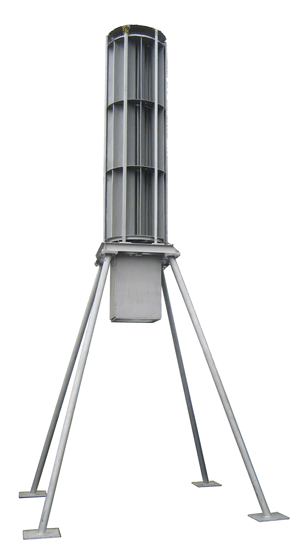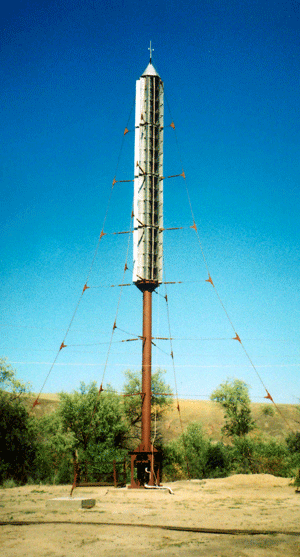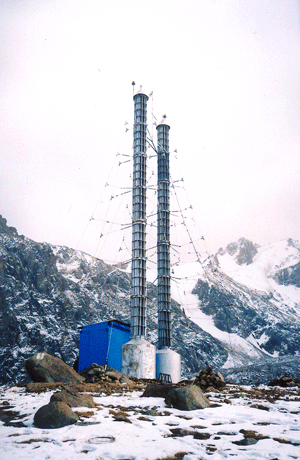Все про видеонаблюдение
Все про умный дом
Все о пожарной безопасности
Сейчас читают
 Как ускорить и смотреть ютуб без тормозов и замедленияЕсли Вы на этой странице, то Вам, скорее всего, […]
Как ускорить и смотреть ютуб без тормозов и замедленияЕсли Вы на этой странице, то Вам, скорее всего, […] 10 лучших прогрессивных языков программирования для разработки мобильных приложенийЗнаете ли вы, что мобильные приложения — это не только […]
10 лучших прогрессивных языков программирования для разработки мобильных приложенийЗнаете ли вы, что мобильные приложения — это не только […] 6 важных особенностей, которые следует учитывать при строительстве нового домаСтроительство нового дома – это уникальная возможность […]
6 важных особенностей, которые следует учитывать при строительстве нового домаСтроительство нового дома – это уникальная возможность […]
Гороскоп на Сегодня

Wind power plants «NPP Eneksis».
In 1993, specialists from the US Electric Power Research Institute assumed that in the next 10-12 years, wind would produce cheaper energy compared to any other resources».
Today, this prediction is beginning to come true.
A wind power plant is a wind power plant that converts the kinetic energy of the wind into electric current.
Since the early 1980s, the cost of electricity generated by wind power plants has fallen by more than an order of magnitude.
When wind power plants began to be used industrially, the average cost of electricity they produced was about 30 cents per kWh.
Currently, wind power plants produce electricity at a price of about 3 cents per kWh.
In many countries, the cost of electricity generated by wind power is comparable to, or even less than, the cost of electricity generated by burning non-renewable resources.
All industrially developed countries have adopted government programs for the development of alternative energy sources, including wind energy, for many years and decades to come.
The world's leading scientific research centers are intensively working on the creation of new generation wind power plants capable of generating electricity at a price comparable to the price of electricity generated by gas-fired steam turbine power plants.
The government program of GermanyThe Eldorado Wind program, adopted in 1993, called for the construction of wind farms with a total capacity of 250 MW, as well as direct investment in support of the industry.
This, together with tax incentives and other measures to encourage the use of wind energy, attracted private capital in an amount that was an order of magnitude greater than government investment.
The total capacity of wind power plants increased from 280 MW in 1993 to 1,576 MW in 1996.
Germany has become the second country after the United States in terms of operating wind turbine capacity.
In the United States, many measures have been taken at the federal and state level since the early 1980s to stimulate the use of renewable energy sources.
Currently, some states have laws requiring energy companies to produce a certain portion of their electricity from renewable energy sources.
The introduction of a temporary tax exemption (in the US, a «tax credit») is a credit for taxpayers who own and operate wind power plants and installations and transmit electricity to consumers through their own network or through the power grid.
In India, in 1992, a special ministry was created to develop alternative energy sources.
Pilot wind power projects with a total capacity of over 50 MW were commissioned.
They were financed by the Central and State Governments.
Various instruments have been developed to attract private capital to wind energy, in particular, a 5-year tax exemption, 100% accelerated depreciation, preferential customs duties on individual components of wind turbines, and a 25% discount on the entire wind turbine, etc.
Working Group of the Ministry of Fuel and Energy of Russia, created in 1993 to develop the «Concept for the Development and Use of Small and Alternative Energy Capabilities in Russia's Energy Balance,» determined that the technical potential of wind energy is 6,218 billion kWh per year.
This is almost 10 times greater than the electricity consumption in Russia in 1997. However, this potential is unevenly distributed.
Promising regions for the use of wind energy are: Arkhangelsk, Astrakhan, Volgograd, Kaliningrad, Kamchatka, Leningrad, Magadan, Murmansk, Novosibirsk, Perm, Rostov, Sakhalin, Tyumen regions; Krasnodar, Stavropol, Primorsky, Khabarovsk territories; other subjects of the Russian Federation: Dagestan, Kalmykia, Karelia, Komi, Nenets Autonomous Okrug, Khakassia, Chukotka, Yakutia, Yamalo-Nenets Autonomous Okrug.
Some areas of other territories, regions and republics of the Russian Federation are also promising.
However, the existing wind energy potential is completely underutilized.
Today, Russia has wind power plants connected to the general power grid, with a total capacity of about 3 MW, generating about 4 million kWh per year.
The majority of these plants are located in Kalmykia, Vorkuta, Rostov, Kaliningrad, and Chukotka.
It has been calculated that in the Russian power grid, including autonomous power supply areas, the economically justified share of wind power can be no less than 5% of total electricity consumption.
According to scientific research, wind can produce energy equivalent to 5800 x 1015 (quad) BTUS (British Thermal Units) annually on a global scale. This is 15 times the world's total energy consumption.
Each «quad» is equivalent to about 172 million barrels of oil or 40 million tons of coal.
Batelle, a Pacific Northwest National Laboratory, estimates that with current technology, wind energy could account for about 20% of the U.S.'s total annual output, or 560 billion kWh annually.
Although wind energy resources are much greater. In the state of North Dakota alone, wind farms can produce one-third of the electricity consumed in the United States.
In 1994, California wind farms prevented the emission of 1.8 million tons of carbon dioxide that would have been emitted into the atmosphere by coal and natural gas power plants — fire-fired power plants. Carbon dioxide is the first of the «gases of the earth's home» to cause global warming of the Earth's climate.
If the 3.3 billion kWh of electricity generated by California's wind farms were generated by burning fossil fuels, an additional 27,000 tons of sulfur dioxide, nitrogen oxide, and fine particulate matter would be emitted into the atmosphere.
Sulfur dioxide and nitrogen oxide are the first harbingers of acid rain.
It also eliminates the emission of heavy metals such as mercury and arsenic contained in coal. If we take the specific fuel consumption at coal power plants of about 340 grams of conventional fuel per 1 kW-h, this means saving 1.2 million tons in coal equivalent.
Wind power plants have been built in all parts of the world.
The top ten countries include both the richest and most developed countries (USA, Germany, Sweden), and developing giant countries (India, China), as well as small European states (Denmark, the Netherlands).
This proves the urgent need to develop wind energy in Russia, despite our rich reserves of organic fuel.
Efficient use of wind energy for generating electricity and creation of cost-effective wind power plants is an important task of modern science.
By its nature, wind is a complex energy source with unpredictable indicators associated with the frequency pulsation of gusts within the wind flow and its own «rose» of winds, which determines the change in direction and strength of the wind during a time interval.
There are two main types of installations: with a vertical axis of rotation and with a horizontal axis of rotation. Wind turbines with a horizontal axis make up about 95%.
According to technical and economic indicators, propeller stations have become widespread in the high-power sector (up to 5 MW), which are being improved in the direction of new design solutions and materials used.
Modern world experience shows that the most favorable territory for their placement is the sea coast with a single-vector «Rose» of winds.
In the case where the wind has a two-vector or multi-vector structure, typical for many continental and mountainous regions, the wind utilization factor for all types of propeller stations decreases more than twofold, thus making wind stations unprofitable or simply unsuitable for operation in these conditions.
The wind guidance system complicates and increases their cost.
The operational disadvantages of propeller wind turbines include the location of heavy mechanical and electrical equipment at a high altitude.
The starting speed of most modern stations is within 4 — 5 m/s. But the wind speed must be maintained at this level for at least 10 minutes, only then will the automation give permission to start the wind turbine.
Therefore, short-term gusts of wind do not count if they last less than 10 minutes. As the power increases, their dimensions increase. In a 2MW installation, the blade length is more than 40 meters, and the mast height is more than 50 m.
The generator has large dimensions. Long blades become a source of high-frequency (ultrasound) and low-frequency (infrasound) noise, harmful to people and animals. This makes it necessary to build wind turbines far from the place of electricity consumption.
In addition, rotating blades have a negative impact on television and radio signals, creating inconvenience for traffic, which makes their placement near housing undesirable.
It is necessary to take into account the complexity of production, operation, repair due to the placement of power units at a height, which makes the cost and operation expensive.
Currently, more and more attention is paid to the development of wind power plants with a vertical arrangement of wind-receiving elements and a low placement of the generator.
This is explained by a significant simplification of the design scheme, ease of installation and maintenance.
One of the main advantages of such wind power plants is the ability to accept wind currents of different directions and the general lack of need to take into account the wind direction during installation and operation.
The Innovation Park of the Russian New University, together with the Russian company NPP ENEXIS, has developed the technology of the Vertical-Axis Wind Turbine (VWT ENEXIS), which has proven to be incomparably more effective in utilizing wind energy than traditional propeller wind turbines.
«VVT ENEXIS», like no other turbine, is suitable for areas with constantly changing wind directionssuch as islands, deserts, coastal areas, mountain passes and gorges, as well as flat steppe areas.
The unique «stator-rotor» solution, which increases the speed of the wind flow, the absence of a gearbox, and a specially designed electric generator provide it with high economic efficiency.
The turbine does not require orientation «to the wind», has a modular design.
The capacity can be increased by adding standard modules. Wind power plants with installed capacity from 0.5 to 5 kW are available for sale.
The total capacity can be increased by creating wind dams.
A one-kilowatt station in the conditions of the Moscow region (the average annual wind speed is 3.5 meters per second) is capable of meeting the needs of a single house for the operation of modern household appliances in normal mode: refrigerator, TV, lighting, computer, circulation pump, submersible pump, electric stove, freezer.

Distinctive features of the VVT »ENEKSIS»:
• operating wind speed from 3 m/s and higher without restrictions (tested up to 45 m/s);
• use of the energy of squalls, gusts and speed pulsations;
• operation in winds of any direction without any adjustment operations;
• modular design principle of the wind-mechanical part;
• widely available construction materials;
• “utilizes” sudden gusts and high-frequency pulsations of wind speed;
• rotor rotation starts independently;
• increased stability of the structure with increasing rotor speed due to the gyroscopic effect;
• ease of installation and maintenance;
• high performance and stability, since the generator and other equipment are located at ground level,
• environmentally friendly and silent (up to 30 dB at a distance of 5 m at a wind speed of 15 m/s), safe for birds and animals;
• minimal effect of visual intrusion into the landscape;
• the possibility of creating multi-row wind power dams of high power;
• the possibility of autonomous or parallel operation with other sources of direct and alternating current, solar converters, battery, diesel stations or power grid;
• an electric generator and automation system of an original design with high efficiency, which is coordinated with the wind-mechanical part of the wind farm and is connected directly to the rotor shaft without a gearbox.
• safety due to the absence of external rotating blades;
• high reliability of the design.
More than 10 different experimental modifications were created, more than a hundred experiments were conducted.
The wind turbines were tested in harsh mountain and steppe conditions.
Two installations operate in the Tien Shan Mountains, more than 3,500 meters above sea level, where the temperature in winter drops to -40 degrees and snow storms blow.
Seven installations operate in the steppes, in conditions of regular dust storms and temperature fluctuations from -30 to +60 degrees.
In gusts, the wind speed reached 45 meters per second. Two wind farms are operated in a desert area where sandstorms are common.
As a result of numerous long-term field tests, dozens of changes were made to the design to improve operational characteristics.
The Enexis wind power plant is simple and reliable to operate, capable of operating autonomously for many years without human supervision, regardless of weather and wind conditions.
Consumers are attracted by simplicity, the practical absence of operating costs, reliability, durability (25-30 years), noiselessness and, most importantly, the use of free, gratuitous wind energy.
Having spent money once, he solves the problem with electricity forever and receives a good, liquid asset in return.
He no longer depends on the continuous growth of prices for it.
For an entrepreneur, farmers, tourist and mountain sports complexes, fishing cooperatives, for any autonomous farms, a real opportunity appears to minimize the cost of manufactured products and services rendered.
And for this is the only possibility of existence and development. Since today it is much more expensive to install a power transmission line than to buy a wind power station.
In addition, the power transmission line must be built at your own expense and transferred to the balance sheet of the local servicing energy company, without receiving any asset in return for the money spent, but only bills for the electricity used.
Unpretentiousness to external operating conditions in any climatic and geographical zones, the wind power station is indispensable for the development of communications equipment, by embedding the module inside relay masts for power supply of oil and gas pipeline monitoring sensors, remote weather stations and military facilities, border outposts and observation posts.
The station has great potential for operation in urban conditions, on the roofs of tall buildings.
Otarashvili Z. A. — Director of the Innovation Park of the Russian New University
Bolotov S. A. — Director of NPP Eneksis







Добавить комментарий